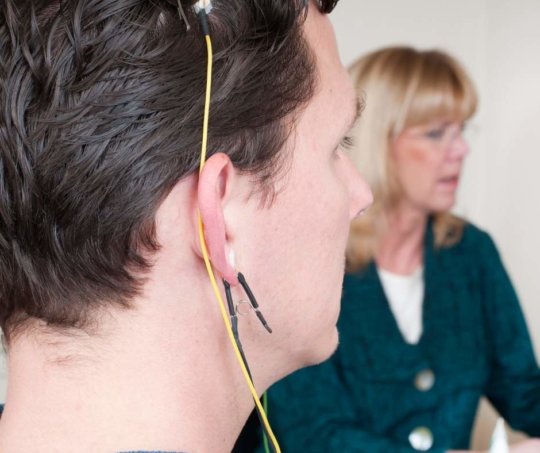Neurofeedback Therapy and Its Role in Addressing Speech Disorders
In recent years, neurofeedback therapy has emerged as an innovative approach for treating various neurological and psychological conditions. Among the diverse applications of this therapeutic modality, its efficacy in ameliorating speech disorders warrants closer examination. Speech disorders, which encompass a spectrum of issues ranging from articulation difficulties to fluency impairments, present significant challenges for affected individuals, particularly children. Neurofeedback, as a non-invasive, self-regulatory technique, offers potential pathways for improving speech production and communication skills.
Understanding Neurofeedback: Mechanisms and Applications
Neurofeedback therapy, also known as EEG biofeedback, harnesses real-time displays of brain activity to enhance self-regulation of brain functions. Patients are trained to alter their brainwave patterns through operant conditioning techniques, utilizing auditory or visual feedback. This training can result in improved cognitive functioning, emotional regulation, and motor skills—crucial elements in the realm of speech production.
At its core, neurofeedback operates on the principle that the brain can be re-trained to function more effectively. The typical protocol involves placing electrodes on the scalp to measure electrical activity while individuals engage in specific tasks or relaxation exercises. Over time, the feedback provided enables patients to recognize and modify maladaptive brainwave patterns, fostering greater neuroplasticity, which is essential for learning and rehabilitation.
Exploring Speech Disorders: The Spectrum of Impairments
Speech disorders can be broadly categorized into several types, including articulation disorders, fluency disorders (such as stuttering), voice disorders, and more. Each type reflects distinct underlying neurological or psychological mechanisms, yet they can often coexist, complicating both diagnosis and treatment.
Articulation disorders manifest as difficulties in producing specific speech sounds correctly, leading to challenges in intelligibility. Children with these disorders may be unable to form consonants or vowels accurately, affecting their communication. In contrast, fluency disorders involve interruptions in the flow of speech, characterized by repetitions, prolongations, or hesitations. Stuttering, as a common fluency disorder, can profoundly impact a child’s social interactions and self-esteem.
Understanding the neurological foundations of these disorders is crucial. Many individuals with speech disorders exhibit atypical activation patterns in brain regions responsible for language and motor functions, including the left inferior frontal gyrus and the right hemisphere’s role in emotional intonation. The integration of neurofeedback therapy aims to recalibrate these patterns, promoting healthier neural connectivity essential for speech development.
Neurofeedback as an Innovative Treatment: Bridging Gaps in Traditional Therapy
Traditional therapeutic interventions for speech disorders, such as speech-language therapy, have maintained a central role in treatment. However, these modalities often necessitate extensive time commitments, patience, and resources, and results can be variable. Neurofeedback therapy offers a complementary approach that not only addresses speech issues directly but also enhances cognitive functioning and emotional well-being.
Research indicates that neurofeedback may produce noteworthy improvements in speech fluency. For instance, children who undergo neurofeedback training exhibit increased control over their speech patterns, resulting in reduced stuttering and more fluid verbal expression. Furthermore, neurofeedback has shown promise in cases of social communication disorders, helping individuals cultivate better concentration and emotional regulation, ultimately leading to improved conversational skills.
Engaging Younger Audiences: Making the Science Accessible
To attract a younger audience, it is pivotal to convey the relevance of neurofeedback therapy in a relatable manner. Utilizing analogies and examples from popular culture can facilitate understanding. Just as video games often require players to adapt their strategies based on feedback and progress, neurofeedback training enables individuals to refine their brain activity to enhance their verbal skills.
Additionally, incorporating digital media components into neurofeedback therapy can further engage younger patients. Interactive applications that gamify the neurofeedback experience may inspire greater participation, transforming what can often be seen as a clinical process into an exciting learning opportunity. By tying therapy to technology that resonates with younger generations, we can pave new pathways for treatment and self-expression.
Challenges and Considerations: Navigating Ethical Waters
Despite its potential, the journey of neurofeedback therapy is not without challenges. Ethical considerations regarding informed consent, especially when involving minors, necessitate immediate attention. Parents and guardians must be thoroughly educated about the processes involved, as well as the potential benefits and risks of neurofeedback treatments.
Moreover, the clinical community requires ongoing research to substantiate the efficacy of neurofeedback in treating specific speech disorders. While initial studies show promise, larger-scale randomized controlled trials are pivotal for establishing best practices and optimizing treatment protocols. In addition, integrating neurofeedback with established speech-languages services could further enhance outcomes, creating a holistic approach to speech therapy.
Looking Ahead: The Future of Neurofeedback Therapy in Speech Disorder Treatment
As our understanding of the brain continues to evolve, so too does the potential for neurofeedback therapy in treating speech disorders. The interplay of neuroscience, technology, and clinical practice heralds an era of significant change. As more practitioners adopt neurofeedback as an adjunct treatment modality, the evidence base will expand, further validating its role in speech therapy.
It is imperative that we foster awareness and accessibility regarding neurofeedback therapy in the context of speech disorders. Interdisciplinary collaborations among neuropsychologists, speech-language pathologists, and educators can cultivate an environment conducive to innovation, ultimately benefiting countless individuals struggling with communication challenges.
As society embraces the burgeoning frontiers of mental health and neurological research, the fusion of technology and therapeutic practices, such as neurofeedback, represents a beacon of hope for those grappling with speech disorders. The path to effective treatment is ever-evolving, and it is incumbent upon us to ensure that all voices are heard and all stories are told.
